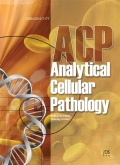Authors: Ardeshirpour, Yasaman | Gandjbakhche, Amir H. | Najafizadeh, Laleh
Article Type:
Review Article
Abstract:
In vivo optical imaging is being conducted in a variety of medical applications, including optical breast cancer imaging, functional brain imaging, endoscopy, exercise medicine, and monitoring the photodynamic therapy and progress of neoadjuvant chemotherapy. In the past three decades, in vivo diffuse optical breast cancer imaging has shown promising results in cancer detection, and monitoring the progress of neoadjuvant chemotherapy. The use of near infrared spectroscopy for functional brain imaging has been growing rapidly. In fluorescence imaging, the difference between autofluorescence of cancer lesions compared to normal tissues were used in endoscopy to distinguish malignant lesions from normal tissue or
…inflammation and in determining the boarders of cancer lesions in surgery. Recent advances in drugs targeting specific tumor receptors, such as AntiBodies (MAB), has created a new demand for developing non-invasive in vivo imaging techniques for detection of cancer biomarkers, and for monitoring their down regulations during therapy. Targeted treatments, combined with new imaging techniques, are expected to potentially result in new imaging and treatment paradigms in cancer therapy. Similar approaches can potentially be applied for the characterization of other disease-related biomarkers. In this chapter, we provide a review of diffuse optical and fluorescence imaging techniques with their application in functional brain imaging and cancer diagnosis.
Show more
Keywords: Diffuse optical imaging, near infrared spectroscopy, functional brain imaging, fluorescence imaging, targeted fluorescent probe, Affibody, cancer treatment, cancer diagnostics, human epidermal growth factor receptor 2
DOI: 10.3233/ACP-2012-0058
Citation: Analytical Cellular Pathology,
vol. 35, no. 5-6, pp. 317-337, 2012
Price: EUR 27.50





